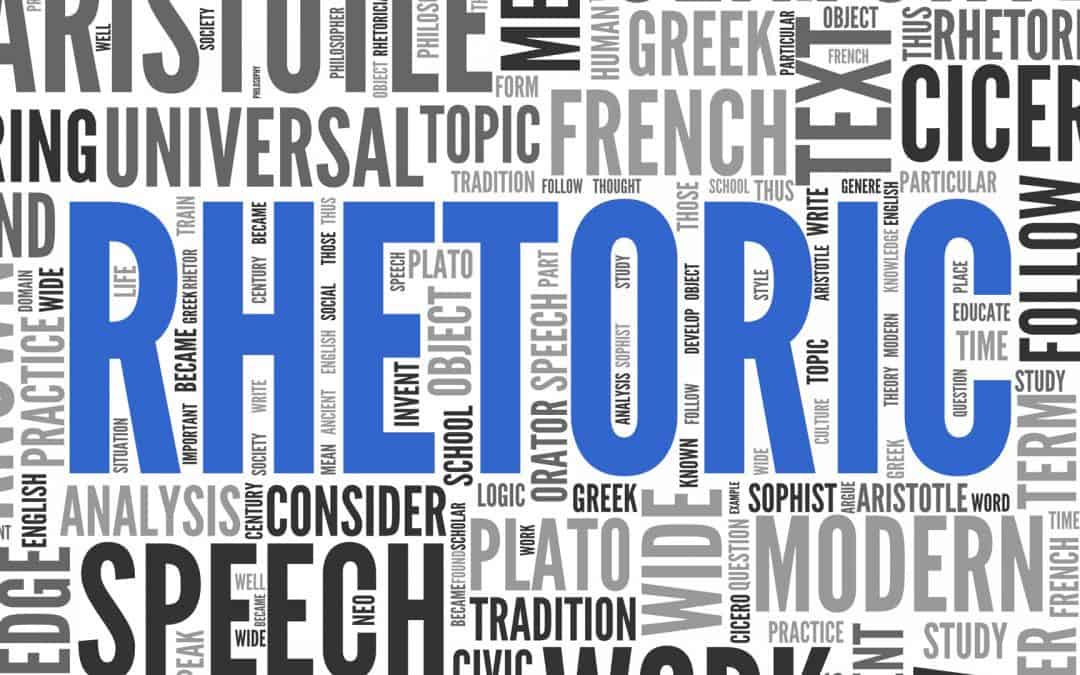Get a higher SAT Essay score - fast - with our instant-download course.
Rhetorical Devices and Persuasive Strategies to Analyze on the SAT Essay
The SAT essay task tends to intimidate students, most of whom have no idea what the graders want from them. Knowing these rhetorical devices and persuasive strategies—and being able to recognize them, quote them when they occur, and analyze their effect on the reader—will go a long way toward helping you achieve a higher SAT essay score.
What’s the SAT Essay task?
Students are given a text—an essay, article, or speech, perhaps—in which the author is making some kind of argument. Your task is to analyze how that author uses rhetorical devices and persuasive strategies to persuade the reader.
How Should You Approach the SAT Essay?
Read the text. Stay on the lookout for rhetorical devices and persuasive strategies listed below. This list is by no means exhaustive, but you’ll find it has more than enough for your purposes. Underline instances wherein the author employs these rhetorical devices and persuasive strategies and name them in the margins. After you’ve finished reading, consider which devices feature most prominently. Begin writing.
Your first paragraph should introduce the reader to the issue at hand, then name the author, the title of the piece, and paraphrase the author’s argument. Next, preview the three or so rhetorical devices you’re going to analyze.
Each body paragraph should be devoted to a different rhetorical device or persuasive strategy. After writing your topic sentence, quote examples from the text. Then—and this is critical—ANALYZE what you’ve quoted. EXPLAIN the EFFECT of the rhetorical device or persuasive strategy on the reader. Rinse and repeat. Each body paragraph ought to have at least two, but probably more, examples.
Now memorize these rhetorical devices and learn to recognize them when they appear!
Rhetorical Devices and Persuasive Stategies to Analyze on the SAT Essay
Ethos – An appeal to authority aiming to establish the credibility of a speaker or source. For example, a writer might say “As a veteranarian…” or “a Harvard University study…” or “a constitutional scholar….”
Pathos – An appeal to the reader’s emotions. They’re trying to make you FEEL something. Angry, perhaps. Guilty. Sad. Jealous. The list goes on…
Logos – An appeal to logic. When the author makes logical connections between ideas, that’s logos. IF this happens, THEN this happens. Things like that.
Anecdote – A short personal story.
Allusion – A reference to a book, movie, song, etc.
Testimony – Quoting from people who have something to say about the issue.
Statistics and Data – Using facts and figures. Often accompanied by logos.
Rhetorical Questions – Asking questions to make the reader think.
Metaphor – Saying one thing IS another thing.
Simile – Saying one thing is LIKE another thing.
Personification – Giving a nonhuman thing human qualities.
Hyperbole – Exaggeration
Understatement – Making something sound much less than it is.
Symbolism – One thing represents something else.
Imagery – Language that appeals to the senses, most often visual
Diction – Word choice. Diction can be HIGH and fancy or LOW and informal. Writers can also use specific words for their DENOTATIVE (dictionary definition) meanings or their CONNOTATIVE (associative) meanings. It’s important to consider these things if you choose to analyze word choice.
Slang – A type of informal diction, often regional.
Jargon – Specialized language.
Alliteration – Several words that share the same first letter.
Assonance – Repeated vowel sounds.
Syntax – Sentence structure.
Repetition – Mentioning a word or phrase several times. ANAPHORA refers to lines beginning with the same word or phrase.
Parallelism – Writing constructed in a similar, symmetrical manner.
Juxtaposition – Holding two things up to compare or contrast them.
Antithesis – Mentioning one thing and its opposite.
Analogy – A comparison between two things, typically to explain function. Usually one thing is more complicated and the other is simple and common.
Inclusive Language – Words that make the reader feel part of a group. “We” is an obvious one.
Tone – The way the author’s voice sounds. Is he silly? Sarcastic? Desperate? Etc.
Humor – Jokes and funny language.
Irony – Situational irony: the opposite thing happens from what is expected. Dramatic irony: The reader knows more than the speaker or those being spoken about. Verbal irony: Saying one thing and meaning the opposite.
* * *
That’s it! Go forth and conquer the SAT essay now that you know these rhetorical devices and persuasive strategies.
For more free SAT and ACT prep tips, join our email list. Don’t forget to check out our exclusive SAT Essay & ACT Essay course, available for instant download!
Looking for 1-on-1 ACT or SAT prep tutoring? Want to join an SAT or ACT group class? Contact us today for a free, personalized consultation!
